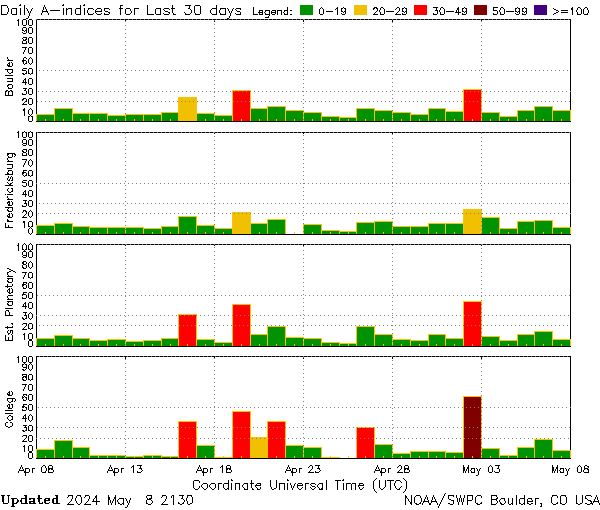
What is the A-Index in Ham Radio?
The A-Index is a measure of geomagnetic activity on Earth, derived from 3-hour measurements of the planet’s magnetic field. Think of it like a “daily average” of space weather conditions. The A-Index runs from 0 (very calm geomagnetic conditions) to 400 (extremely stormy conditions). It’s important for ham radio operators because Earth’s magnetic field heavily influences radio wave propagation, especially on the HF bands.
How Does a High A-Index Affect Ham Radio?
When the A-Index is high — generally 20 or above — it usually means that a geomagnetic storm is happening or recently happened. This can disturb the ionosphere, the layer of the atmosphere that reflects radio waves back to Earth. The result? HF communication (like 20 meters, 40 meters, 80 meters) can become noisy, weak, or even totally blacked out in some regions.
For operators, a high A-Index often means:
-Weaker long-distance (DX) signals
-Increased background noise
-Sudden, unpredictable changes in signal strength
-Shortened maximum usable frequencies (MUF)
What About Low A-Index Days?
When the A-Index is low — usually 0 to 7 — it’s a great time to be on the air! A calm magnetic field helps create stable and strong ionospheric layers, leading to:
-Clearer, stronger signals
-Better chances of DX (long-distance) contacts
-More predictable and longer-lasting band openings
-Higher usable frequencies for longer periods
Many ham operators check the A-Index daily along with other indicators like the K-Index and solar flux index (SFI) to decide the best times and bands for making contacts.

